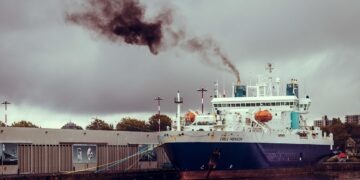Plastic Pollution: Confronting the Enduring Environmental Threat
Plastic pollution has emerged as one of the most formidable environmental challenges of the 21st century. Its widespread impact affects oceans, wildlife, and human health, highlighting a critical need for global strategies and more sustainable practices. This comprehensive guide explores the causes, consequences, and potential solutions to this persistent issue, aiming to inform and inspire actionable change.
Understanding Plastic Pollution
Plastic pollution refers to the accumulation of synthetic plastic products in the environment to the point where they create problems for wildlife and their habitats, as well as for human populations. Over the last sixty years, plastic usage has increased dramatically, making it a prevalent but problematic part of modern life. The durability of plastics, particularly their resistance to degradation, makes them a persistent environmental threat.
Causes of Plastic Pollution
The root of plastic pollution stems from overproduction and mismanagement of plastic waste. Single-use plastics like grocery bags, food packaging, and straws, which are used temporarily and then discarded, contribute significantly to the issue. These plastics often land in landfills or, worse, in natural ecosystems. Moreover, inadequate waste disposal systems and lack of recycling infrastructure exacerbate the spread of plastic pollution globally.
Impact on Ecosystems and Health
Plastic waste, particularly in marine environments, is known for entangling wildlife and being ingested by a wide array of organisms, leading to injury or death. Microplastics, which are tiny pieces of degraded plastic, are pervasive contaminants that affect both aquatic and terrestrial environments. These microplastics not only harm organisms but also enter the human food chain through seafood and water, eventually posing numerous health risks including hormonal disruption and cancer.
Global Efforts to Mitigate Plastic Pollution
Addressing the challenge of plastic pollution requires concerted international cooperation and robust policy frameworks. Various global initiatives and agreements aim to tackle this issue head-on.
International Agreements and Initiatives
Efforts such as the United Nations Environment Programme’s Clean Seas campaign and the Global Partnership on Marine Litter work towards reducing marine litter. Countries are also coming together to pass more stringent waste management laws that emphasize recycling and reduction of plastics.
Innovative Solutions to Plastic Waste
Technology plays a pivotal role in combating plastic pollution. Innovations like biodegradable plastics, effective recycling techniques, and waste-to-energy plants offer promising paths forward. Public and private investments in these technologies are crucial to develop sustainable and scalable waste management solutions.
Sustainable Practices at the Individual Level
While international and governmental actions are vital, individual behaviors play a significant role in reducing plastic pollution.
Reducing Single-Use Plastics
One of the most effective actions individuals can take is to minimize their reliance on single-use plastics. Opting for reusable bags, bottles, and containers can significantly cut down on plastic waste. Awareness and consumer demands for sustainable products can also drive companies to change their materials and practices.
Recycling and Proper Waste Disposal
Proper sorting of recyclables drastically improves the efficiency of recycling processes. Educating oneself about the recycling codes and community-specific guidelines can enhance personal recycling habits, contributing to broader environmental benefits.
Engagement Through Education and Advocacy
Education is a powerful tool in the fight against plastic pollution. Increased awareness of the pollution crisis and knowledge of practical actions can lead to more ecological choices by individuals and communities.
Community Involvement and Cleanup Activities
Participating in local cleanups or organizing community awareness events are hands-on ways to combat plastic pollution. These activities not only clear up waste but also cultivate a shared responsibility toward environmental stewardship.
The Role of Policy Advocacy
Engaging with policymakers and supporting legislation aimed at managing plastic waste and reducing production are critical. Advocacy can influence public policies and lead to the development of more sustainable industrial practices.
Conclusion
Plastic pollution is an enduring environmental threat that demands a comprehensive response from international cooperation to individual action. By understanding the scope of the problem, supporting innovative solutions, and adopting more sustainable practices, humanity can hope to mitigate the pervasive impact of plastic waste. The time to act is now, to ensure a healthier planet for future generations.










